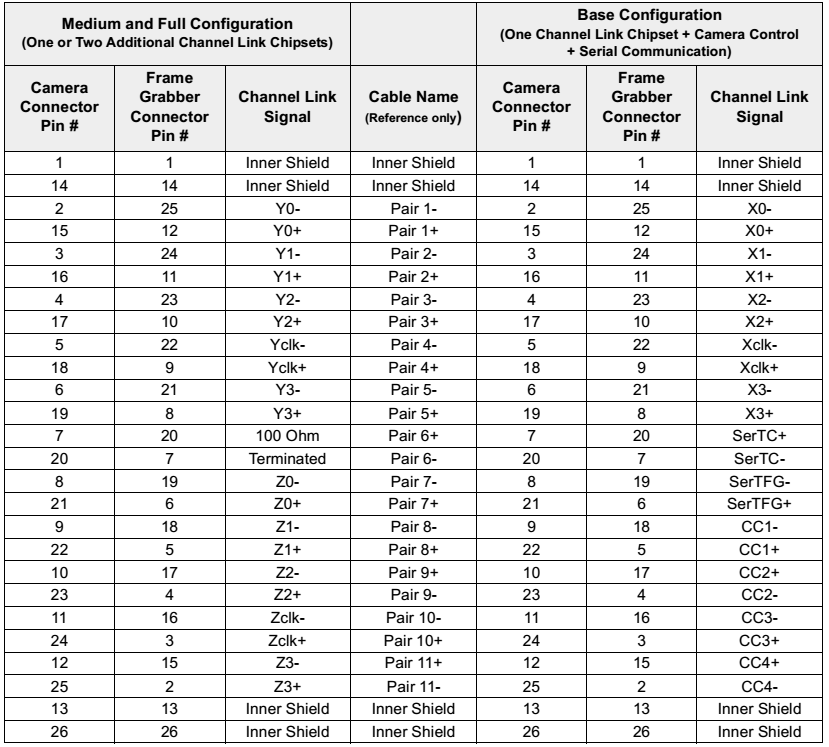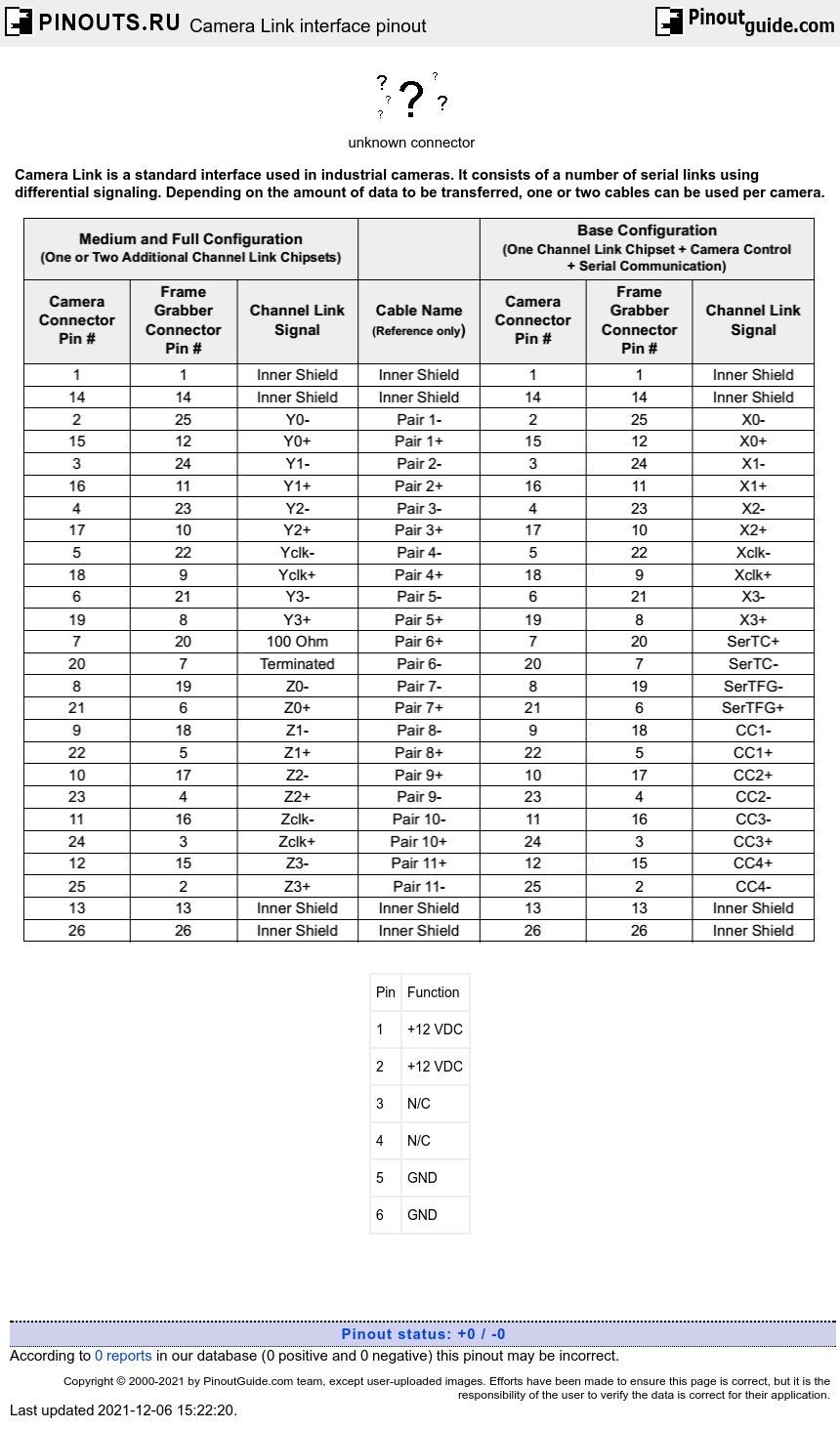Many current digital video solutions use LVDS communication as specified for RS-644. While RS-644 LVDS is an improvement over older methods such as RS-422, it still requires bulky cables and has a limited transmission rate. To solve these problems, the Camera Link standard is based on Channel Link technology. Channel Link is the latest advance in LVDS (Low Voltage Differential Signaling) technology for transmitting digital data. Channel Link uses a parallel-to-serial transmitter and a serial-to parallel-receiver to transmit data at rates up to 2.38 Gbps.
Every signal is carried by two wires, with a voltage difference of 0.35 V. When the nominally positive wire has a higher potential than the negative one, this represents a high logic level, when the negative wire has a higher potential, a low. Camera Link comes in three variants, Base, Medium and Full. The Base configuration uses only one 4-channel Channel Link transmitter (the one at the bottom) and requires only one cable. Medium uses two transmitters and receivers, Full uses three, and both require two cables.
The connector is 26-pin MDR.
Power is not provided to the camera through the Camera Link connector. Power is supplied to the camera via a separate connector. The standard leaves each camera manufacturer free to define their own power connector, current, and voltage requirements. Basler will use a Hirose 6 pin receptacle.
| Pin | Function |
| 1 | +12 VDC |
| 2 | +12 VDC |
| 3 | N/C |
| 4 | N/C |
| 5 | GND |
| 6 | GND |




 correct
correct incorrect
incorrect